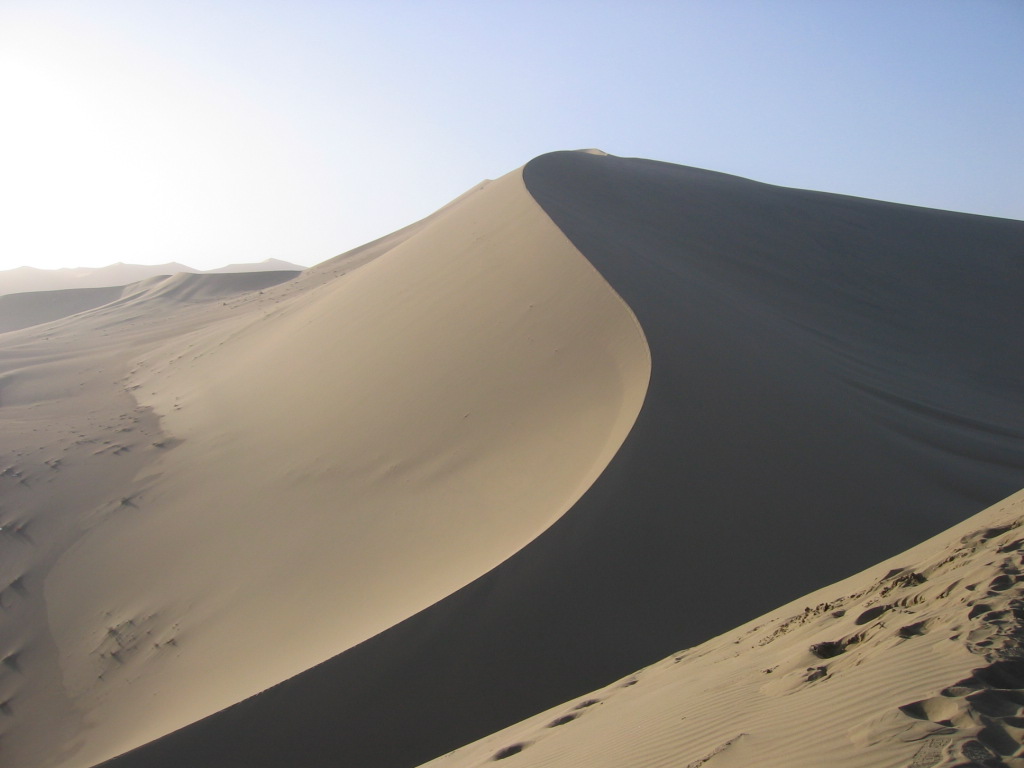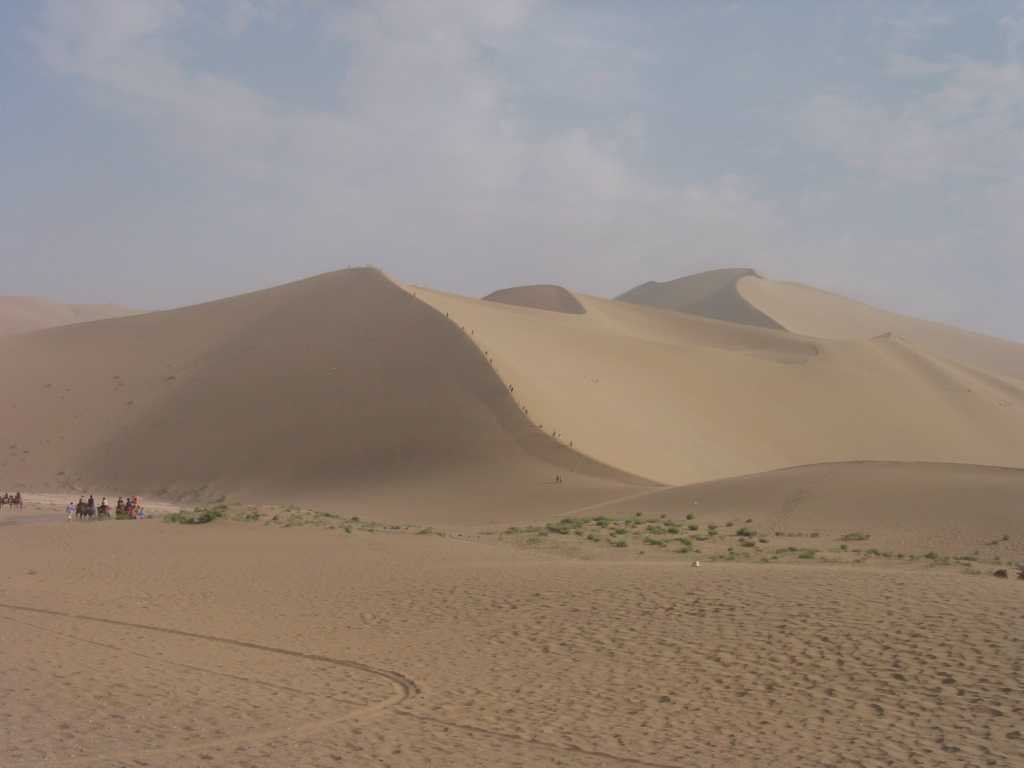|
||||||||||||||
|
||||||||||||||
Sound Dunes (Mingsha)Sound Dunes (Mingsha)
The accumulation of windblown sand marks the beginning of one of nature’s most interesting and beautiful phenomena. Sand dunes occur throughout the world, from coastal and lakeshore plains to arid desert regions. In addition to the remarkable structure and patterns of sand dunes, they also provide habitats for a variety of life which is marvelously adapted to this unique environment. Picturesque dunes against a sky of blue or a full moon, with perfectly contoured shadows of ripples and undulating crests, have always been a favorite subject of photographers. Dunes have also been the subject of many desert movies, and have historically been a formidable barrier to vehicular and rail travel. Depending upon one’s particular situation, they can be one of the most incredibly beautiful, thrilling, eerie, treacherous or just plain inhospitable places on earth.
The origin of sand dunes is very complex, but there are three essential prerequisites: (1) An abundant supply of loose sand in a region generally devoid of vegetation (such as an ancient lake bed or river delta); (2) a wind energy source sufficient to move the sand grains; and (3) a topography whereby the sand particles lose their momentum and settle out. Any number of objects, such as shrubs, rocks or fence posts can obstruct the wind force causing sand to pile up in drifts and ultimately large dunes. There are even reports of ant hills forming the nucleus upon which sand dunes are built. The direction and velocity of winds, in addition to the local supply of sand, result in a variety of dune shapes and sizes. The wind moves individual grains along the inclined windward surface until they reach the crest and cascade down the steep leeward side or "slip face," piling up at the base and slowly encroaching on new territory. Some California dunes with crests only 30 feet high may advance 50 feet a year, posing a serious threat to nearby farms and roads. If the wind direction is fairly uniform over the years, the dunes gradually shift in the direction of the prevailing wind. Vegetation may stabilize a dune, thus preventing its movement with the prevailing wind. Along the Oregon coast, entire forests may cover sand dune areas. Sometimes severe storms or other disturbances can destroy the forest canopy allowing sand from nearby dunes to move into the disturbed area.
|




